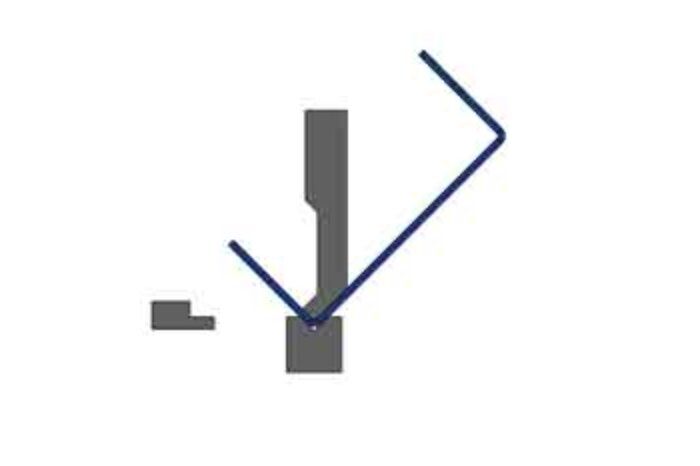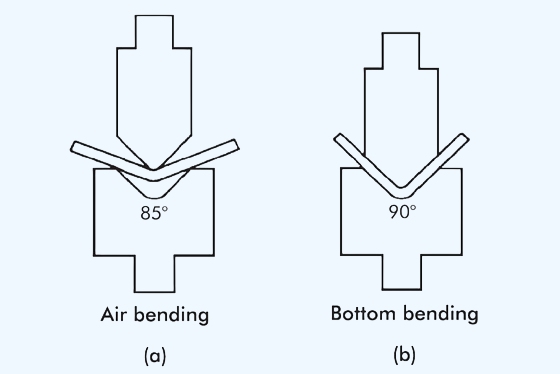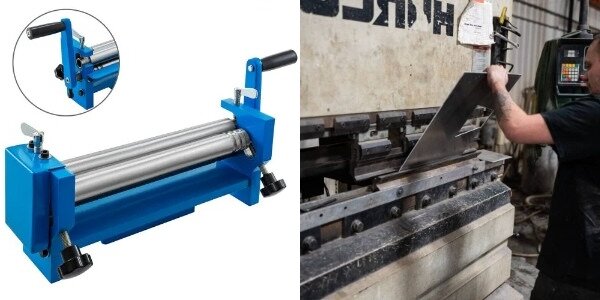Steel is one of the most versatile materials used in industries today. Whether you are designing or manufacturing, understanding the difference between hot rolled and cold rolled steel is critical. Each type has distinct advantages, and selecting the right one can greatly affect your project’s outcome.
Hot rolled steel is made by heating metal above 1700°F and rolling it into shape. Cold rolled steel is processed at room temperature, making it smoother and more precise. The key difference? Strength, finish, and cost.
To ensure you pick the right steel for your application, it’s crucial to know how these differences impact cost, strength, and performance. Let’s take a closer look at both options.
What is Hot Rolling?
Hot rolling is a process in which steel is heated to a very high temperature, usually between 1,700 to 2,100°F, above its recrystallization point. Once heated, the steel is passed through rollers to shape it into sheets, plates, or beams. The heat softens the steel, making it easier to shape.
Hot Rolled Steel Characteristics
Hot rolled steel has several key features that make it suitable for specific applications:
- Rough Surface Finish: The high temperature during the process often leaves the steel with a rough surface. It may need additional treatment, like grinding or coating, for a smoother finish.
- Lower Cost: Hot rolling is an efficient and inexpensive method, making it a cost-effective option for many projects.
- Large, Structural Forms: Hot rolled steel can be shaped into large and thick sections. This makes it ideal for structural parts like beams and columns.
- Lower Strength and Tolerances: While hot rolled steel is flexible, it tends to have lower strength and less precision than cold rolled steel. It also has larger tolerances.
Hot Rolling Process
In hot rolling, the steel is first heated in a furnace. Once it reaches the right temperature, it is passed through rollers to compress and shape it into thin sheets or long bars. After that, the steel is cooled and cut to the required size. This process is quick, cost-effective, and well-suited for shaping large and heavy sections.
Temperatures and Mechanical Properties
The temperature at which the steel is rolled affects its final properties. Higher temperatures make the steel softer and more malleable. While this allows for easier shaping, it can reduce the steel’s tensile strength.
The result is a rougher surface and larger tolerances compared to cold rolled steel. However, the process is more cost-effective. It works well for applications where high precision is not needed.
What is Cold Rolling (CRS)?
Cold rolling (CRS) is a process where steel is shaped at room temperature or below its recrystallization point. This happens after the steel has already gone through hot rolling. Cold rolling compresses the steel under high pressure, making it thinner and more uniform. This process also improves the steel’s mechanical properties, surface finish, and tolerance.
Cold Rolled Steel Characteristics
Cold rolled steel has several key benefits, especially for applications that need higher precision:
- Smooth Surface Finish: Cold rolled steel has a smoother surface compared to hot rolled steel. This makes it ideal for projects where appearance matters, such as in automotive or appliance parts.
- Higher Strength: Cold rolling increases the tensile strength of steel. This makes it stronger and more durable, perfect for products that face higher stress and wear.
- Tighter Tolerances: Cold rolled steel has more precise dimensions and a uniform thickness. This makes it ideal for applications that require tight tolerances.
- Increased Hardness: The cold rolling process also makes the steel harder. It becomes more resistant to deformation, making it suitable for precision machinery parts.
Cold Rolling Process
In cold rolling, steel is cooled after hot rolling and then passed through rollers at room temperature or slightly higher temperatures. The steel is compressed to reduce its thickness. This process also tightens the grain structure, improving the surface finish and mechanical properties.
Cold rolling is usually used for thinner sheets and more detailed shapes. Afterward, the steel is often heat-treated or annealed to relieve stress and improve its ductility.
Temperatures and Mechanical Properties
Cold rolling happens at lower temperatures compared to hot rolling, typically at room temperature. This difference in temperature greatly affects the mechanical properties of the steel. Cold rolled steel is stronger and harder because its grain structure is more compact. However, it can be more brittle, especially if the thickness is reduced significantly.
Cold rolling improves the surface finish and precision. This makes it the preferred choice for applications that need these features, like parts for the automotive and consumer electronics industries.
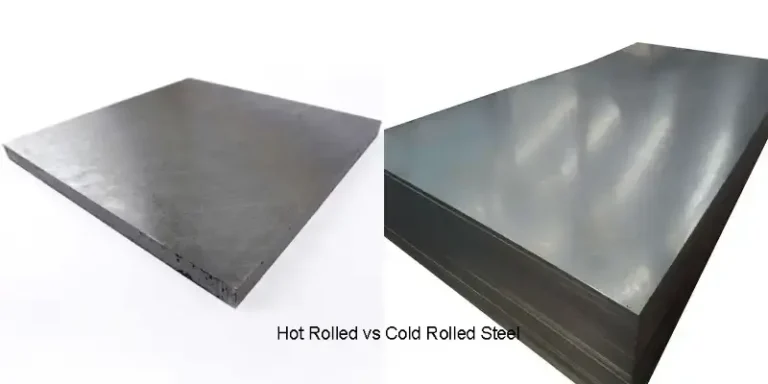
Key Differences Between Hot Rolled and Cold Rolled Steel
Choosing between hot rolled and cold rolled steel depends on the specific needs of your project. Let’s compare the two types of steel in a few key areas.
Temperature and Its Impact on Steel Structure
The temperature at which steel is processed affects its structure.
- Hot Rolled Steel: Processed at high temperatures (1,700°F to 2,100°F), hot rolled steel has a looser grain structure, which makes it easier to shape. However, this structure can result in lower tensile strength compared to cold rolled steel.
- Cold Rolled Steel: Processed at or near room temperature, cold rolled steel has a tighter grain structure, which increases its hardness and strength. This makes it more durable, but it can also be more brittle in certain situations.
Process Differences: Hot vs Cold
Hot and cold rolling are very different processes.
- Hot Rolling: Steel is heated to high temperatures and passed through large rollers to shape it. This process works best for producing larger, thicker steel sections like beams and plates.
- Cold Rolling: After hot rolling, steel is processed at room temperature. This results in thinner, more precisely shaped sections. Cold rolling also improves the steel’s dimensions and surface finish.
Effect on Mechanical Properties
The mechanical properties of the two types of steel differ due to the processes they go through.
- Hot Rolled Steel: Since it’s shaped at high temperatures, hot rolled steel has lower tensile strength and less precision. It’s good for applications that don’t require tight tolerances.
- Cold Rolled Steel: The cold rolling process increases the strength and hardness of the steel. It’s perfect for applications that need precision. Cold rolled steel also allows for tighter tolerances and better formability.
Surface Finish and Appearance
The surface finish is one of the most noticeable differences between the two.
- Hot Rolled Steel: Hot rolled steel often has a rough, scaled surface because of the high temperatures. It may need additional processing, like grinding or coating, to improve its appearance.
- Cold Rolled Steel: Cold rolled steel has a smooth, refined surface. This makes it more visually appealing and ideal for applications where appearance matters, like consumer products.
Cost Comparison
Hot rolled steel is usually more cost-effective than cold rolled steel.
- Hot Rolled Steel: The process is less expensive because it involves fewer steps and doesn’t require the precision of cold rolling.
- Cold Rolled Steel: Cold rolling requires more steps and precise machinery, making it a more costly option. However, its higher strength, smoother finish, and tighter tolerances make it worth the extra cost for certain applications.
| Feature | Hot Rolled Steel | Cold Rolled Steel |
|---|---|---|
| Processing | Single-stage hot rolling at high temperatures | Multi-stage process: hot rolling, cleaning, cold rolling, and (optional) annealing |
| Surface Finish | Rough, mill scale | Smooth, clean finish |
| Dimensional Tolerances | Looser tolerances | Tighter tolerances |
| Strength | Good overall strength | Higher strength |
| Ductility | More ductile | Slightly less ductile |
| Cost | More economical | More expensive |
| Common Applications | Construction, automotive frames, machinery components | Appliances, furniture, automotive body panels, electronics |
Hot Rolled vs Cold Rolled Steel: Pros and Cons
Both hot rolled and cold rolled steel have their advantages and disadvantages. Your choice will depend on the specific needs and requirements of your project. Let’s break down the pros and cons of each to help you decide.
Hot Rolled Steel: Pros and Cons
Pros:
- Lower Cost: Hot rolled steel is more affordable because its manufacturing process is simpler and has fewer steps.
- Faster Production: Hot rolling is quicker, making it a good choice for high-volume production runs.
- Large Size and Shape Flexibility: Hot rolled steel can be made into larger and thicker sections, making it ideal for structural components like beams and large pipes.
Cons:
- Rough Surface Finish: The surface of hot rolled steel is often rough and uneven, needing extra work like grinding or coating for a smoother finish.
- Lower Precision: Hot rolled steel is less precise than cold rolled steel. It’s not ideal for projects that require tight tolerances.
- Reduced Strength: Hot rolled steel generally has lower strength, so it may not be suitable for applications that need higher strength.
Cold Rolled Steel: Pros and Cons
Pros:
- Higher Strength and Durability: Cold rolling increases the strength and hardness of the steel, making it suitable for high-performance applications.
- Better Surface Finish: Cold rolled steel has a smooth, refined surface, which makes it ideal for products that need a clean finish.
- Tighter Tolerances: Cold rolled steel offers greater precision and better dimensional accuracy, which is important for parts that must fit together precisely.
Cons:
- Higher Cost: Cold rolled steel is more expensive due to its more complex and time-consuming process.
- Brittleness: Cold rolled steel is stronger but can be more brittle, especially if it has been hardened. This can make it more prone to cracking in certain situations.
- More Limited Size and Shape Options: Cold rolled steel is usually limited to thinner sheets and narrower profiles, making it less suitable for larger structural projects.
Hot Rolled vs Cold Rolled Steel: Applications
Both hot rolled and cold rolled steel are used in various industries, but they are best suited for different applications due to their unique properties. Let’s explore where each type of steel excels in real-world uses.
Hot Rolled Steel Applications
Construction and Infrastructure
Hot rolled steel is commonly used in the construction industry for building materials like beams, fireproof door, and structural plates. The large size and lower cost make it ideal for large-scale construction projects where precision is not the highest priority.
Automotive Industry
Hot rolled steel is used in manufacturing car frames, chassis, and other large parts that do not require high precision but need durability. The ability to produce large parts quickly and cost-effectively is a key factor in its use here.
Pipe and Tube Manufacturing
Hot rolled steel is often used for the production of pipes and tubes. Its ability to be rolled into large sections makes it a cost-effective option for manufacturing long, durable pipes that are used in water, oil, and gas pipelines.
Agricultural Equipment
In agricultural equipment manufacturing, hot rolled steel is often used for producing large, heavy-duty parts that do not need to meet tight tolerance requirements. It’s ideal for components like frames and structures.
Cold Rolled Steel Applications
Automotive Parts and Components
Cold rolled steel is commonly used in the automotive industry for parts that require high strength, precision, and a smooth surface finish. Components such as body panels, fuel tanks, and interior parts benefit from the enhanced strength and finish of cold rolled steel.
Consumer Electronics
Cold rolled steel is used in the production of consumer electronics, including appliance casings, laptops, and mobile phone frames, where a smooth surface and precise dimensions are crucial for both functionality and aesthetics.
Precision Machinery and Equipment
Cold rolled steel’s high strength and tight tolerances make it perfect for precision machinery. It’s used in manufacturing components like gears, shafts, and other machine parts that require durability and exact dimensions.
Home Appliances
Many household appliances, including refrigerators, washing machines, and ovens, use cold rolled steel for their structural components. The smooth surface and precision are essential for product quality and appearance.
Medical Devices
Cold rolled steel is often used in the medical device industry for parts that need to meet high cleanliness standards and precision, such as surgical tools, medical equipment frames, and instruments.
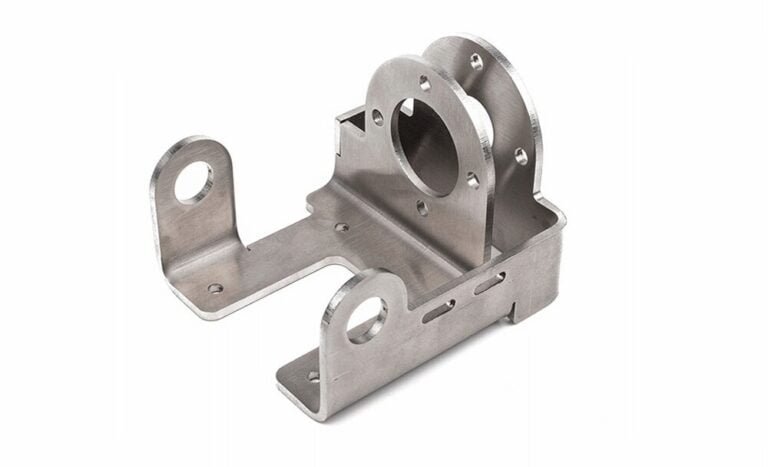
How to Choose Between Hot Rolled and Cold Rolled Steel?
Choosing between hot rolled and cold rolled steel depends on the specific needs of your project. Let’s look at the key factors that will help you make the right decision.
Factors to Consider: Cost, Strength, and Application
- Cost:
Hot rolled steel is typically more affordable because its manufacturing process is simpler. It’s a good option for large-scale or budget-sensitive projects. Cold rolled steel is more expensive because it involves more complex production steps, but it offers better precision and a smoother finish. - Strength:
Cold rolled steel is stronger than hot rolled steel because it is processed at room temperature. This creates a denser grain structure. If your project requires higher strength and durability, cold rolled steel might be the better choice. However, hot rolled steel can still work well for applications that don’t need high strength. - Application:
Hot rolled steel is ideal for large structural components like beams, pipelines, and agricultural equipment, where precision is less important. Cold rolled steel is best for parts that require precision, such as automotive components, consumer electronics, and machinery that need tight tolerances and a smooth surface.
When to Use Hot Rolled Steel?
- Large Scale Projects:
Hot rolled steel is perfect for projects that involve large parts or structures. It’s ideal when cost and speed are more important than surface finish or precise measurements. - Structural Components:
Hot rolled steel is commonly used in construction, bridges, and infrastructure where strength and durability matter, but exact precision is not as critical. - Bulk Production:
If you’re manufacturing a large number of components at a lower cost, hot rolled steel is a great choice due to its faster production and lower material cost.
When to Use Cold Rolled Steel?
- Precision Parts:
Cold rolled steel is the go-to material for parts that require tight tolerances. It’s perfect for high-performance components like gears, machine parts, and automotive or aerospace components that need accuracy and strength. - Aesthetic Considerations:
If the surface finish is important, such as for consumer electronics, appliances, or decorative products, cold rolled steel is the better choice due to its smooth and refined surface. - Strength and Durability Requirements:
When you need steel with higher strength, cold rolled steel is the better option. It’s more durable and harder, making it ideal for demanding applications like automotive components.
Conclusion
Hot rolled steel is processed at high temperatures, making it more cost-effective and suitable for large, structural components. Cold rolled steel, on the other hand, is processed at room temperature, offering a smoother finish, higher strength, and tighter tolerances, but at a higher cost.
Need more information or help with selecting the right steel for your project? Contact us today to get expert advice and customized solutions tailored to your needs!
FAQs
Which is easier to bend, hot or cold rolled steel?
Hot rolled steel is easier to bend than cold rolled steel. This is because it’s heated to high temperatures during production, which makes it softer and more flexible. Cold rolled steel, processed at room temperature, is harder and more rigid.
Can hot rolled steel be used for the same applications as cold rolled steel?
Hot rolled steel is generally not used for the same applications as cold rolled steel. It works best for large-scale projects like construction or heavy machinery, where precise measurements are not as critical. Cold rolled steel, with its smoother surface and stronger properties, is preferred for tasks that need precision.
Is cold rolled steel stronger than hot rolled steel?
Yes, cold rolled steel is stronger than hot rolled steel. The cold rolling process refines the steel at room temperature, making the grain structure denser. This increases its strength and hardness, making it more suitable for high-strength, durable, and precise applications.
Why is cold rolled steel more expensive than hot rolled steel?
Cold rolled steel is more expensive than hot rolled steel because it requires extra processing. After hot rolling, cold rolled steel goes through additional refining at room temperature. This takes more time, energy, and precision equipment.
Can cold rolled steel be further processed?
Yes, cold rolled steel can be processed further. It can undergo treatments like annealing (to reduce stress), galvanizing (to prevent rust), or coating with paint or other materials.
Hey, I'm Kevin Lee

For the past 10 years, I’ve been immersed in various forms of sheet metal fabrication, sharing cool insights here from my experiences across diverse workshops.
Get in touch

Kevin Lee
I have over ten years of professional experience in sheet metal fabrication, specializing in laser cutting, bending, welding, and surface treatment techniques. As the Technical Director at Shengen, I am committed to solving complex manufacturing challenges and driving innovation and quality in each project.


